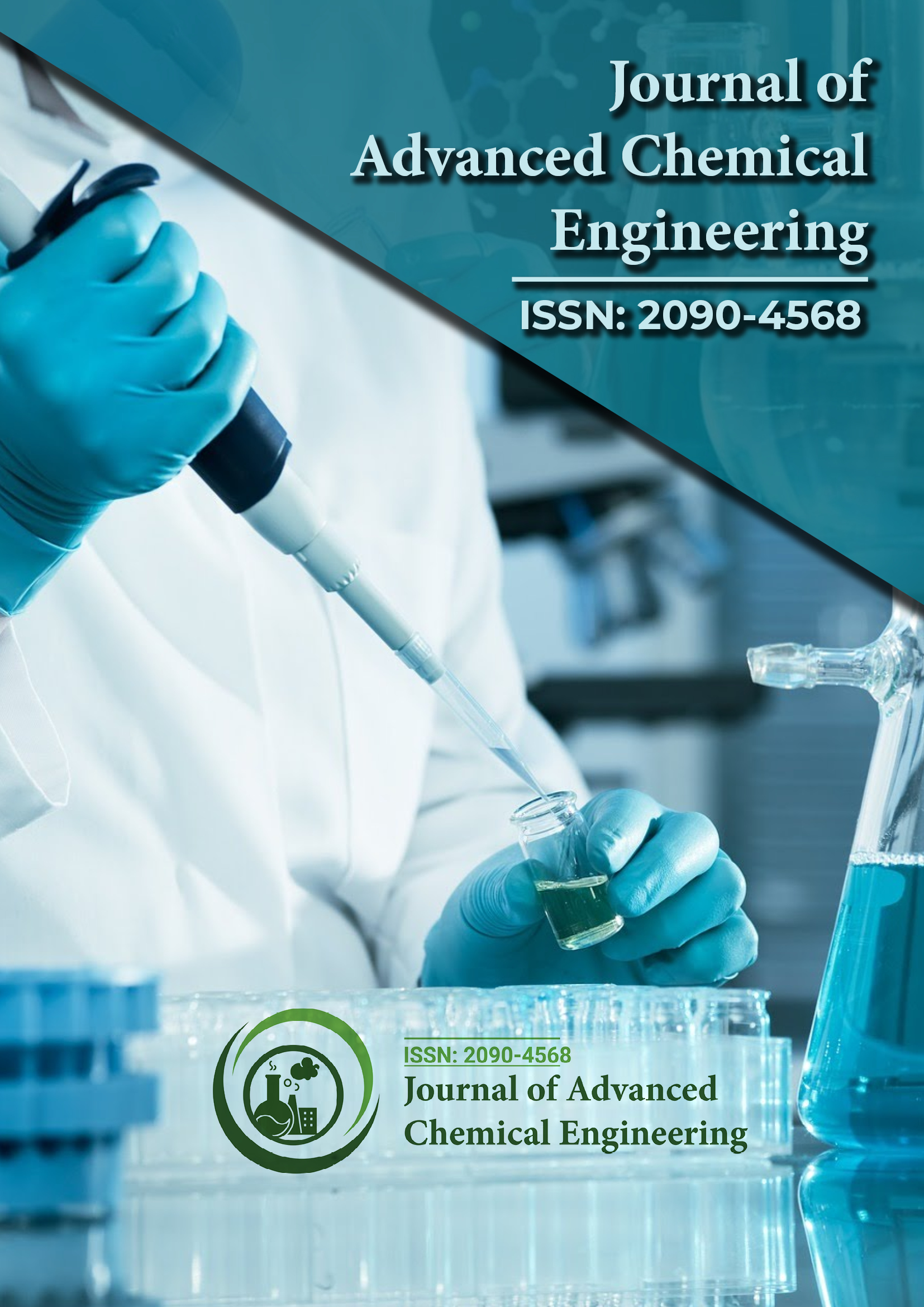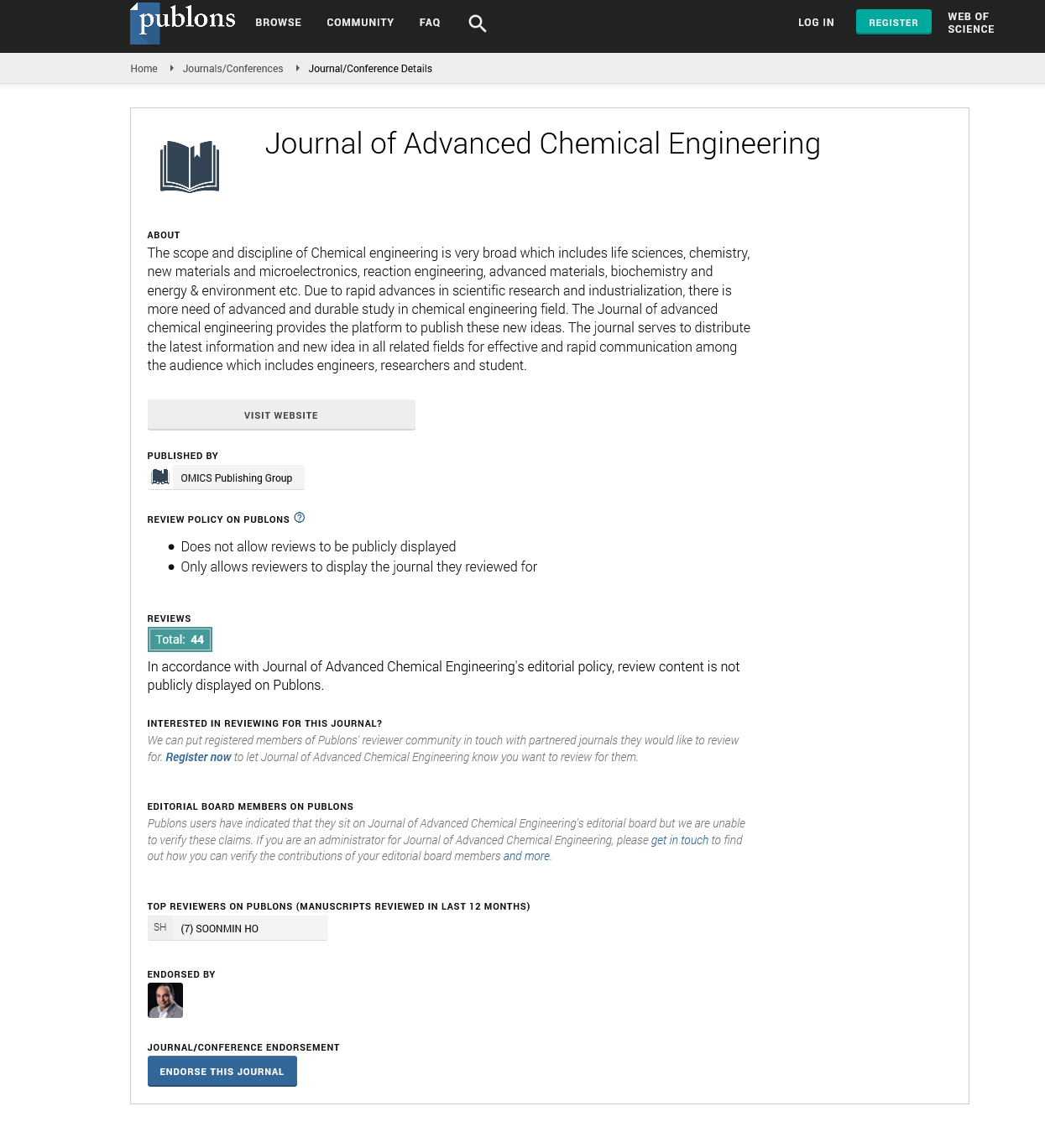Indexed In
- Open J Gate
- Genamics JournalSeek
- Smithers Rapra
- RefSeek
- Directory of Research Journal Indexing (DRJI)
- Hamdard University
- EBSCO A-Z
- OCLC- WorldCat
- Scholarsteer
- Publons
- Geneva Foundation for Medical Education and Research
- Google Scholar
Useful Links
Share This Page
Journal Flyer

Open Access Journals
- Agri and Aquaculture
- Biochemistry
- Bioinformatics & Systems Biology
- Business & Management
- Chemistry
- Clinical Sciences
- Engineering
- Food & Nutrition
- General Science
- Genetics & Molecular Biology
- Immunology & Microbiology
- Medical Sciences
- Neuroscience & Psychology
- Nursing & Health Care
- Pharmaceutical Sciences
Abstract
Kinetic and Thermodynamic Studies of Used Palm Olein Oil Using Alkaline-Activated Rice Husk as An Adsorbent
Mohammed J.G*, Uthman H, Aboje A.A, Afolabi A and Azeez O.S
In this study, the effectiveness of bleaching used palm olein oil was investigated using alkaline-activated rice husk as an adsorbent. The rice husk sample was activated with Potassium Hydroxide (KOH). Characterization of the raw and Alkaline-Activated Rice Husk (AARH) was carried out using Brunauer-Emmett-Teller (BET) and Scanning Electron Microscopy (SEM). The AARH shows an improvement in the total surface area (65.220 m2/g) compared to the raw rice husk (60.500 m2/g). SEM micrograph investigation reveals an improvement in the morphological characteristics of the AARH. The examination of the bleached used palm olein oil using Fourier Transform Infrared spectroscopy (FT-IR) reveals the existence of distinctive functional groups. To evaluate the effectiveness of the bleaching process, operating temperature, contact time, and adsorbent dosage were varied. As the temperature and adsorbent dosage increased, the bleaching efficiency increased as well. A bleaching efficiency of 53.17% was recorded as the best. The adsorption process at 80°C is best described by the pseudo-second-order kinetic model, which has a coefficient of determination, R2, of 0.9848. The Temkin isotherm model offered the most accurate fitting for the adsorption figures, with the highest values of R2 (0.5395, 0.9967, 0.9650, and 0.9990) at temperatures of 60°C, 70°C, 80°C, and 90°C, respectively. The thermodynamic analysis of the adsorption process produced positive values for the Gibbs free energy, ΔG0, proving that the adsorption process was non-spontaneous and exothermic with increasing temperature. This investigation has proven that rice husk can be converted into an effective and efficient alkaline-activated adsorbent for vegetable oil bleaching.
Published Date: 2025-01-13; Received Date: 2023-11-11

